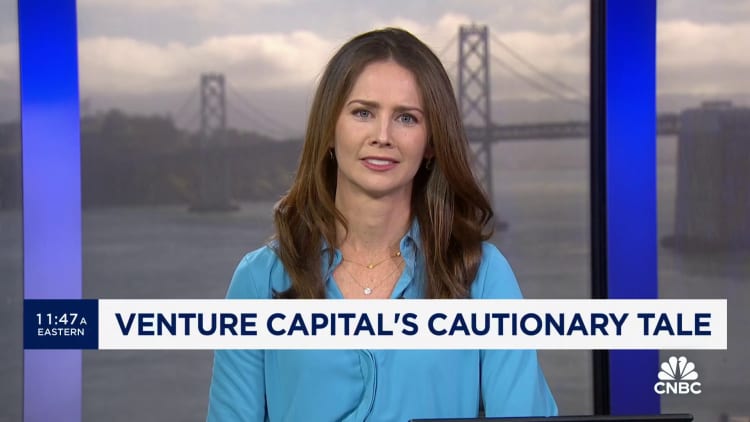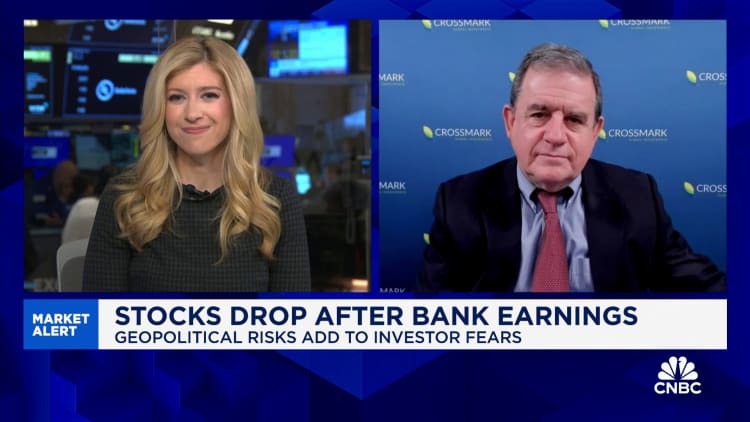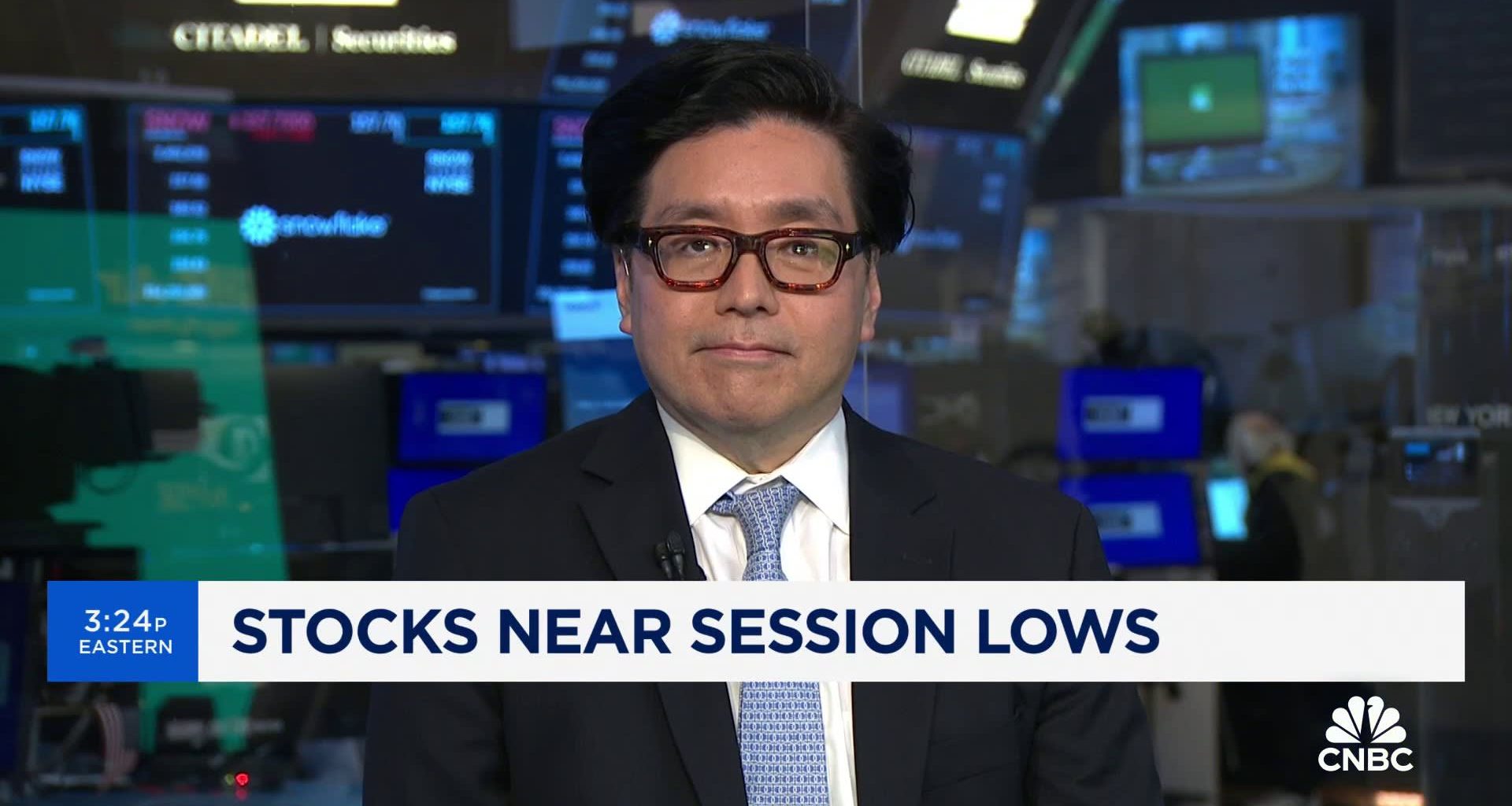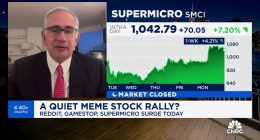A sign advertising units for rent is displayed outside of a Manhattan building on April 11, 2024 in New York City.
Spencer Platt | Getty Images
The early data is in for the path of inflation during the first three months of 2024, and the news so far is, well, not good.
Pick your poison. Whether it’s prices at the register or wholesale input costs, while inflation is off the blistering pace of 2022, it doesn’t appear to be going away anytime soon. Future expectations also have been drifting higher.
Investors, consumers and policymakers — even economists — have been caught off guard with just how stubborn price pressures have been to start 2024. Stocks slumped Friday as the Dow Jones Industrial Average coughed up nearly 500 points, dropping 2.4% on the week and surrendering nearly all its gains for the year.
“Fool me once, shame on you. Fool me twice, shame on me,” Harvard economist Jason Furman told CNBC this week. “We’ve now had three months in a row of prints coming in above just about what everyone expected. It’s time to change the way we think about things going forward.”
No doubt, the market has been forced to change its thinking dramatically.

Even import prices, an otherwise minor data point, contributed to the narrative. In March, it posted its biggest increase for a three-month period in about two years. All of it has amounted to a big headache for markets, which sold off through most of the week before really hitting the skids Friday.
As if all the bad inflation news wasn’t enough, a Wall Street Journal report Friday indicated that Iran plans to attack Israel in the next two days, adding to the cacophony. Energy prices, which have been a major factor in the past two months’ inflation readings, pushed higher on signs of further geopolitical turmoil.
“You can take your pick. There’s a lot of catalysts” for Friday’s sell-off, said market veteran Jim Paulsen, a former strategist and economist with Wells Fargo and other firms who now writes a blog for Substack titled Paulsen Perspectives. “More than anything, this is really down to one thing now, and it’s the Israel-Iran war if that’s going to happen. … It just gives you a great sense of instability.”
High hopes dashed
In contrast, heading into the year markets saw an accommodative Fed poised to cut interest rates early and often — six or seven times, with the kickoff happening in March. But with each months’ stubborn data, investors have had to recalibrate, now anticipating just two cuts, according to futures market pricing that sees a non-zero probability (about 9%) of no reductions this year.
“I’d love the Fed to be in a position to cut rates later this year,” said Furman, who served as chair of the Council of Economic Advisers under former President Barack Obama. “But the data is just not close to being there, at least yet.”
This week was filled with bad economic news, with each day literally bringing another dose of reality about inflation.
It started Monday with a New York Fed consumer survey showing expectations for rent increases over the next year rising dramatically, to 8.7%, or 2.6 percentage points higher than the February survey. The outlook for food, gas, medical care and education costs all rose as well.
On Tuesday, the National Federation of Independent Business showed that optimism among its members hit an 11-year low, with members citing inflation as their primary concern.
Wednesday brought a higher-than-expected consumer price reading that showed the 12-month inflation rate at 3.5%, while the Labor Department on Thursday reported that wholesale prices showed their biggest one-year gain since April 2023.
Finally, a report Friday indicated that import prices rose more than expected in March and notched the biggest three-month advance since May 2022. On top of that, JPMorgan Chase CEO Jamie Dimon warned that “persistent inflationary pressures” posed a threat to the economy and business. And the University of Michigan’s closely watched consumer sentiment survey came in lower than expected, with respondents pushing up their inflation outlook as well.
Still ready to cut, sometime
Fed officials took notice of the higher readings but did not sound panic alarms, as most said they still expect to cut later this year.
“The economy has come a long way toward achieving better balance and reaching our 2 percent inflation goal,” New York Fed President John Williams said. “But we have not seen the total alignment of our dual mandate quite yet.”
Boston Fed President Susan Collins said she sees inflation “durably, if unevenly” drifting back to 2% as well, but noted that “it may take more time than I had previously thought” for that to happen. Minutes released Wednesday from the March Fed meeting showed officials were concerned about higher inflation and looking for more convincing evidence it is on a steady path lower.

While consumer and producer price indexes captured the market’s attention this week, it’s worth remembering that the Fed’s attention is elsewhere when it comes to inflation. Policymakers instead follow the personal consumption expenditures price index, which has not been released yet for March.
There are two key differences between the CPI and the PCE indexes. Primarily, the Commerce Department’s PCE adjusts for changes in consumer behavior, so if people are substituting, say, chicken for beef because of price changes, that would be reflected more in PCE than CPI. Also, PCE places less weighting on housing costs, an important consideration with rental and other shelter prices holding higher.
In February, the PCE readings were 2.5% for all items and 2.8% ex-food and energy, or the “core” reading that Fed officials watch more closely. The next release won’t come until April 26; Citigroup economists said that current tracking data points to core edging lower to 2.7%, better but still a distance from the Fed’s goal.
Adding up the signals
Moreover, there are multiple other signals showing that the Fed has a long way to go.
So-called sticky price CPI, as calculated by the Atlanta Fed, edged up to 4.5% on a 12-month basis in March, while flexible CPI surged a full percentage point, albeit to only 0.8%. Sticky price CPI entails items such as housing, motor vehicle insurance and medical care services, while flexible price is concentrated in food, energy and vehicle prices.
Finally, the Dallas Fed trimmed mean PCE, which throws out extreme readings on either side, to 3.1% in February — again a ways from the central bank’s goal.
A bright spot for the Fed is that the economy has been able to tolerate high rates, with little impact to the employment picture or growth at the macro level. However, there’s worry that such conditions won’t last forever, and there have been signs of cracks in the labor market.
“I have long worried that the last mile of inflation would be the hardest. There’s a lot of evidence for a non-linearity in the disinflation process,” said Furman, the Harvard economist. “If that’s the case, you would require a decent amount of unemployment to get inflation all the way to 2.0%.”
That’s why Furman and others have pushed for the Fed to rethink it’s determined commitment to 2% inflation. BlackRock CEO Larry Fink, for instance, told CNBC on Friday that if the Fed could get inflation to around 2.8%-3%, it should “call it a day and a win.”
“At a minimum, I think getting to something that rounds to 2% inflation would be just fine — 2.49 rounds to two. If it stabilized there, I don’t think anyone would notice it,” Furman said. “I don’t think they can tolerate a risk of inflation above 3 though, and that’s the risk that we’re facing right now.”

Read More: World News | Entertainment News | Celeb News
CNBC









